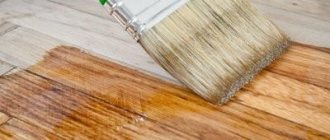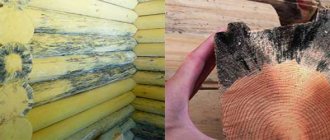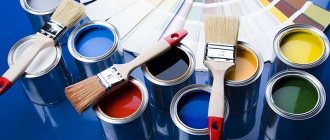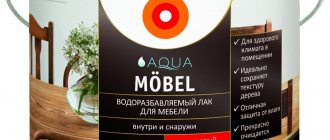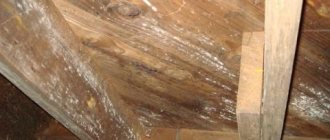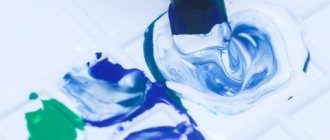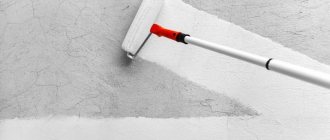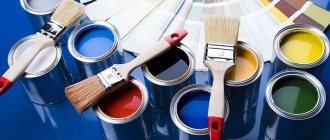How to protect aluminum from corrosion and oxidation: all methods
Aluminum is a highly reactive metal that oxidizes under normal conditions when surrounded by oxygen.
In normal condition, aluminum products are covered with an oxide film, which slightly protects the metal. Spontaneously formed aluminum oxide covers the surface unevenly, and adhesion to the substrate is not always strong. The protection of metal by a spontaneously formed oxide coating is unreliable. Corrosion of aluminum is initiated by oxygen and moisture. The process is catalyzed by aggressive environments and the presence of certain metals and materials nearby. Protection of aluminum from corrosion comes down to leveling the effect of initiating, catalyzing influences. You can neutralize external aggression using the following methods:
- forming a special coating on the surface from a purposefully obtained oxide;
- painting the outer layer.
Properties
You may be interested in: There is fire all around! I don’t know the meaning of the word, but I feel it’s burning
Let's study the characteristics of aluminum. The described metal melts at a temperature of 659 degrees Celsius. The density of the substance is 2.69*103 kg/cm3. Aluminum belongs to the group of active metals. Resistance to corrosion processes depends on a number of factors:
- Purity of the alloy. For the production of various equipment, metal is taken that is distinguished by its purity. It should not contain various impurities. Aluminum grades AI1 and AB2 are widely used.
- Environment in which aluminum is located.
- What is the concentration of impurities in the environment surrounding aluminum.
- Temperature.
- The pH of the environment has a great influence. You need to know that aluminum oxide can form when the pH is in the range between 3 and 9. In an environment where an oxide film immediately appears on the surface of an aluminum sheet, corrosion processes will not develop.
Anodic oxidation of aluminum
The reaction to form the shielding layer can be carried out electrochemically. The process is being implemented in stages.
Preparation for anodizing. The product is cleaned of fat deposits by immersion in a solution of oxalic acid. Then they are washed with water and dipped in an alkali solution to remove the layer of oxides that was unevenly formed earlier.
The material is immersed in an electrolytic solution of sulfate (sulfuric) acid of strictly designated density. In the international literature, this acid is called dihydrogen sulfate. The aluminum object is connected to the positive pole of the electrical power source. Therefore the process is called anodic. The cathode is made of lead. A current of a certain density at a specified voltage begins to pass through the working solution. The temperature of the solution has a huge impact on the density and color of the oxide coating.
The lower temperature promotes the formation of a dense film with a beautiful rich color. Elevated temperatures lead to the formation of a loose, colorless film that requires subsequent coloring. Cooling the working bath is an energy-intensive process. The decision on the mode of oxidation is made based on the received technical specifications.
To obtain additional coloring, the structure can be immersed in selected salt solutions. The formed coating contains pores in greater or lesser quantities. To seal them, the aluminum material is exposed to steam or boiling water solutions.
The processing is completed by drying the material and packaging it.
In some technologies, chromic acid or oxalic acid solutions are used as a working electrolyte instead of sulfuric acid. According to statistics, a minority of aluminum structures in the world are protected using this method.
Is sulfuric acid dangerous for aluminum?
People wonder whether aluminum rusts in sulfuric acid. Such acid is potentially dangerous for alloys. It has pronounced oxidizing properties. They destroy the oxide film and accelerate metal corrosion.
An interesting point is that concentrated cold sulfur does not affect aluminum. If aluminum is heated, then metal corrosion processes can begin. In this case, salt appears, it is called aluminum sulfate. It is soluble in water.
Painting of aluminum products
Most manufactured products are protected by applying a layer of dyes. If the dyes are dissolved, then dyeing is called wet. If the dyes are dry, the procedure is often called powder coating.
Wet dyeing
Application of paint and varnish layers is possible after protecting the aluminum with a passivating primer, which contains zinc and strontium compounds. The primer is applied in two stages onto a carefully prepared metal base. After complete evaporation of the solvent from the primer mixture, the surface is covered with an insulating outer layer of oil or glyphthalic varnish. There are functional paint and varnish compositions that protect against chemicals, gasoline, and oils. To obtain colored decorative structures, hammer varnishes are used. With some protection technologies, bakelite varnish is applied under pressure to ensure that all micropores are filled. The choice of coating is determined by future operating conditions. Application technology is constantly being improved.
Powder coating
To use this method, the metal also needs to be cleaned of a layer of fat and other inclusions. Preparation is carried out by immersion in alkaline, slightly alkaline (almost neutral), and acidic solutions. Wetting agents are sometimes added to improve cleaning efficiency.
The next stage in the preparation of some aluminum structures is the formation of a conversion layer by treatment with chromate and phosphate compounds. Sometimes zirconium and titanium compounds are used. The need for this stage is determined by the specific features of the product. This is a matter of competence of technologists. Each stage of processing alternates with mandatory washing and drying of the material.
Then a polymer is applied, which performs a protective function. Polyesters are widely used. They form a dense layer that is resistant to chemical, mechanical, and thermal effects. Polymerized urethane coatings have greater hardness. Epoxy, polyester-epoxy, and acrylic powders are also used. They form a surface of any given color, structure, and ability to reflect light rays. The coloring powder is applied using the electrostatic or tribostatic method.
Electrostatically, pigment particles in the air (fluids) are charged by the action of electrodes. Tribostatically, paint grains are charged due to the frictional force produced by a special gun. The process is carried out in chambers. Unused powder is collected and returned to its original location. The stage ends with polymerization at high temperature.
Both types of aluminum coloring allow you to obtain colors that meet international standards. Some production requirements necessitate a sequential combination of two methods: anodic oxidation and painting. The number and essence of the methods used are determined by specialists.
Leveling the influence of neighboring materials
Metals and materials located nearby can stimulate corrosion of aluminum. To prevent this effect, only stainless or galvanized steel is allowed next to aluminum structures. Gaskets made of rubber, paronite, and bitumen can prevent contact. Aluminum structures should not come into contact with concrete, brick, stone, or wood. For protection, varnish and any other insulating materials are recommended.
General information
A feature of all types of metals can be called their ability to react with H2O, as well as with the environment. The only difference for all types of metal is the intensity of this type of process. For example, for noble metals like gold, the rate of this reaction will not be very fast, but iron, including aluminum, will react to influences of this nature extremely quickly. There are a couple of factors that have a direct impact on the intensity of the corrosion process. One of them can be called the level of environmental aggressiveness, as well as the chemical or metallurgical structure. The atmosphere that surrounds us is always characterized by a set level of moisture. In addition, it will be characterized by a separate level of waste and pollution.
Considering that atmospheric characteristics are often determined by region, as well as by the level of industrialization, at the moment we can note:
- Rural areas (low levels of pollution and average humidity).
- Areas near the sea (average levels of pollution, as well as high levels of moisture).
- Urban area (the degree of humidity is average, as well as the level of decay products of liquid fuel, carbon oxides and sulfur are also average).
- Industrial and industrial zones (large amounts of carbon oxides, acids and sulfur, as well as average moisture levels).
For a large number of cases, inorganic acids, even at low concentrations, are ways to dissolve aluminum. And even a film of natural origin of aluminum oxide cannot provide sufficient protection against the occurrence of corrosion processes. The most powerful solvents are potassium, fluorine and sodium. Moreover, aluminum is characterized by a fairly low level of resistance to bromine and chromium compounds. Cement and lime mortars will be quite aggressive to various aluminum metal alloys.
There are several types of corrosive aluminum and its alloys:
- Superficial. This type of destruction occurs most often and is less harmful than others. It is better to change it on the surface. This makes it possible to use safety measures, and surface damage is extremely common on anodized profiles for construction.
- Local. These types of damage appear in the form of shapes, spots and depressions. This type of corrosion is of intercrystalline and surface type. Destructions of this nature are extremely dangerous due to the fact that they are very difficult to detect. This type of corrosion very often destroys hard-to-reach parts of components and structures.
- Filigree or thread-like. This type of aluminum damage often appears under the coating of organic species, as well as on the boundary surfaces being processed. Filament-type corrosion occurs at weakened areas of damaged organic coating or at the edges of holes.
Quite often, the natural anti-corrosion abilities of alloys and aluminum itself are extremely insufficient to protect against destruction. But the long service life of products made from such metals requires the use of additional methods of protection.
The most popular methods of protecting metals from corrosion include:
- Anodized oxidation (research by specialists from Germany shows that this type of protection is used for 15% of the bulk of the production of building profiles in the world).
- Coating the metal surface with powder-type compounds.
- Protection from contact with other metals.
see also
Comments 54
It is necessary to prime, and preferably with an acidic one, because After stripping, aluminum oxidizes in seconds. The scorched surface can be coated with parquet varnish, just polish it and immediately cover it while it’s still hot - when it cools down a little, oxide will already appear on the surface.
I’ll tell you not advice, but a specific action. Ford transit 2 liter gasoline, 1999, the aluminum cover with all its sins was cleaned with sandpaper and primed with VL 100 primer, now it’s called acidic, there orthophosphoric acid is used to prime aluminum at aircraft factories, then painted metallic, snowy queen and varnish 18 years like new.
I polished the aluminum ignition cover on the motorcycle and coated it with regular 2K Reoflex varnish. The engine is an air-cooled boxer engine, so it stays warm. For two years of operation, no problems - nothing peeled off, nothing cracked
How to clean with improvised means?
When using aluminum items, dark spots appear on their surface. Oxide can be removed using simple cleaning methods.
Lemon acid
To treat an aluminum container, it is necessary to prepare a solution in the following proportion: for each liter of water - 2 tablespoons of citric acid. The resulting solution must be boiled for a quarter of an hour (or a little longer if there is a lot of oxide). After this, the container is washed.
Protecting aluminum from corrosion
Aluminum and its alloys are characterized by excellent resistance to various types of damage. However, despite this, corrosion of aluminum is not such a rare phenomenon. Various forms of corrosion represent the main cause of deterioration of these materials. To combat destructive processes, it is imperative to understand the factors that cause their occurrence.
Aluminum corrosion is a reaction that takes place between the metal and its environment. This process can be of either natural or chemical origin. The most common form of metal destruction is the appearance of rusting processes on its surface.
A special feature of all types of metals is their ability to react with water and the environment. The only difference for each type of metal is the intensity of this process. For example, for noble metals such as gold, the rate of such a reaction will not be too fast, but iron, including aluminum, will react to influences of this nature quite quickly.
Two factors can be distinguished that have a direct impact on the intensity of the corrosion process. One of them can be called the degree of aggressiveness of the environment, and the second is the metallurgical or chemical structure. The atmosphere that surrounds us is always characterized by a certain level of humidity. In addition, it is characterized by a certain level of pollution and waste.
What factors can slow down the process?
There are a number of factors that slow down the corrosion process of aluminum, and some of them stop this phenomenon. The following are distinguished:
Mg-Al alloys
Such materials are widely used in construction, food and chemical industries. They are also very often used in mechanical engineering. It is believed that such materials are also well suited for the construction of structures exposed to sea water.
If the alloy contains no more than 3% magnesium, its anti-corrosion properties will be almost the same as technical aluminum. Magnesium in such an alloy is in solid solution and in the form of Al8Mg5 particles, evenly distributed throughout the matrix.
If the alloy contains more than 3% of this metal, Al8Mg5 particles begin to fall out, for the most part, not inside the grains, but along their boundaries. And this, in turn, has an extremely negative effect on the anti-corrosion properties of the material. That is, the product becomes much less resistant to rust.
How does water affect the metal being described?
Corrosion of aluminum in water can occur from damage to the top layer and protective film. The high temperature of the liquid contributes to the rapid destruction of the metal. If aluminum is placed in fresh water, then corrosion processes will practically not be observed. If you increase the water temperature, you may not notice any changes. When the liquid heats up to a temperature of 80 degrees or higher, the metal begins to deteriorate.
The corrosion rate of aluminum increases if alkali gets into the water. The described metal is hypersensitive to salt. That is why sea water is destructive for it. To use this metal in seawater, it is necessary to add magnesium or silicon to the liquid. If you use a sheet of aluminum that contains copper, then corrosion of the alloy will occur much faster than that of a pure substance.
Alloys with magnesium and silicon
Such materials are most often used in mechanical engineering and construction. Mg2Si makes alloys of this variety very strong. Sometimes copper is also a component of such elements. It is also introduced into the alloy for strengthening. However, copper is added to such materials in very small quantities. Otherwise, the anti-corrosion properties of the aluminum alloy may be greatly reduced. Intercrystalline rusting in them begins already with the addition of more than 0.5% copper.
Also, the susceptibility to corrosion of such materials may increase with an unjustified increase in the amount of silicon included in their composition. This substance is usually added to aluminum alloys in such proportions that after the formation of Mg2Si there is nothing left over. Only some materials of this variety contain silicon in its pure form.
Corrosion of aluminum and its alloys with zinc
Al, as already mentioned, rusts more slowly than its alloys. This also applies to materials from the Al-Zn group. Such alloys are in great demand, for example, in aircraft construction. Some varieties may contain copper, others may not. Moreover, the first type of alloys, of course, is more resistant to corrosion. In this regard, Al-Zn materials are comparable to magnesium-aluminum materials.
Alloys of this variety with the addition of copper show signs of some rust resistance. But at the same time, they are destroyed due to corrosion more slowly than those made using magnesium and Cu.
Basic ways to combat rust
Of course, it is also possible to reduce the corrosion rate of aluminum and its alloys artificially. There are only a few ways to protect such materials from rust.
For example, contact of this metal and its alloys with the environment can be prevented by painting paintwork materials. Electrochemical methods are also often used to protect aluminum from rust. In this case, the material is additionally coated with a layer of a more active metal.
Another way to protect Al from rust is high-voltage oxidation. Powder coating techniques can also be used to prevent corrosion of aluminum. Of course, rust inhibitors are also used to protect it.
Use of household chemicals
You can find special products for cleaning and polishing aluminum products. Their use gives a good effect, but not all of them can be used to clean dishes from the inside in contact with food.
Shine Coins for cleaning and polishing
The domestically produced product is intended for cleaning and polishing products, both aluminum and coins . The product contains surfactants and an ultra-nanodisperse abrasive component, which is gentle on the aluminum surface.
Shake the product before use. It is convenient to apply the drug with a sponge using rubbing movements. After processing, the aluminum product is rinsed. The cost for a volume of 150 ml is from 250 rubles.
Autosol Aluminum Cleaner
Aluminum cleaner is an auto chemical product. The product is produced in Germany. The drug is suitable for eliminating complex contaminants and areas of oxidation . Can be used to process aluminum cookware.
The cleaner is applied by spraying and works within 10 minutes. After the treatment, the surface is cleaned and polished with a rag. Cost for 500 ml – from 600 rubles.
How is oxidation done?
Using this technique, aluminum and its alloys are often protected from corrosion. Oxidation is performed under a voltage of 250 V. When using this technique, a strong oxide film is formed on the surface of the metal or its alloy.
In this case, the material is exposed to current using water cooling. At low temperatures, due to stress, a film on the surface of aluminum is formed very strong and dense. If the procedure is carried out at high temperatures, it turns out to be quite loose. Aluminum processed in such an environment requires additional protection from contact with air (painting).
When using this technology, the product is first degreased in a solution of oxalic acid. The aluminum or alloy is then dipped into alkali. Next, the metal is exposed to current. At the final stage, if the oxidation was carried out at a sufficiently high temperature, the material is additionally painted by immersion in salt solutions and then treated with steam.
Under what conditions does aluminum deteriorate in air?
You might be interested in: Alternativeity is having a choice of options
Some people wonder if aluminum rusts when exposed to air. If the oxide film on the top layer of metal is destroyed, the corrosion process may begin. As a result, rust may appear. Film growth tends to slow down in fresh air. It should be remembered that aluminum oxide has good adhesion to the metal surface.
If the sheet is stored in a warehouse, the film will be from 0.01 to 0.02 microns. If the metal comes into contact with dry oxygen, then the thickness of the oxide film on the surface will be from 0.02 to 0.04 microns. If aluminum is subjected to heat treatment, the film thickness changes. It will be equal to 0.1 microns.
Using LMB
This method, like oxidation, is used to protect aluminum from rust quite often. This material can be painted using dry, wet or powder methods. In the first case, aluminum is first treated with a composition containing zinc and strontium. Next, the paintwork itself is applied to the metal.
When using the powder method, the working surface is first degreased by immersion in alkaline or acidic solutions. Next, chromate, zirconium, phosphate or titanium compounds are applied to the product.
Use of insulators
Very often, other metals become stimulants for the onset of corrosion processes in aluminum and its alloys. This usually happens when products or their parts come into direct contact. To prevent aluminum from rusting, special insulators are used in this case. Such gaskets can be made from rubber, paronite, or bitumen. Also in this case, varnishes and paints can be used. Another way to protect aluminum from corrosion when in contact with other materials is to coat its surface with cadmium.
It is especially important to ensure that aluminum parts in various mechanisms and assemblies are insulated from direct contact with copper. It is also believed that it is not only the actual parts made of Al that should be protected from contact with other metals. In terms of resistance to corrosion, iron is much inferior to aluminum, like steel, for example. Therefore, such metals and some others are often protected in a special way. The materials are simply coated with a protective aluminum layer. Of course, such products should also be protected from contact with copper or other metals.
Causes of corrosion
When the question arises whether aluminum rusts, you need to think about the reasons leading to corrosion. Various external factors can accelerate this process. The reasons for the appearance of rust on aluminum can be the following:

